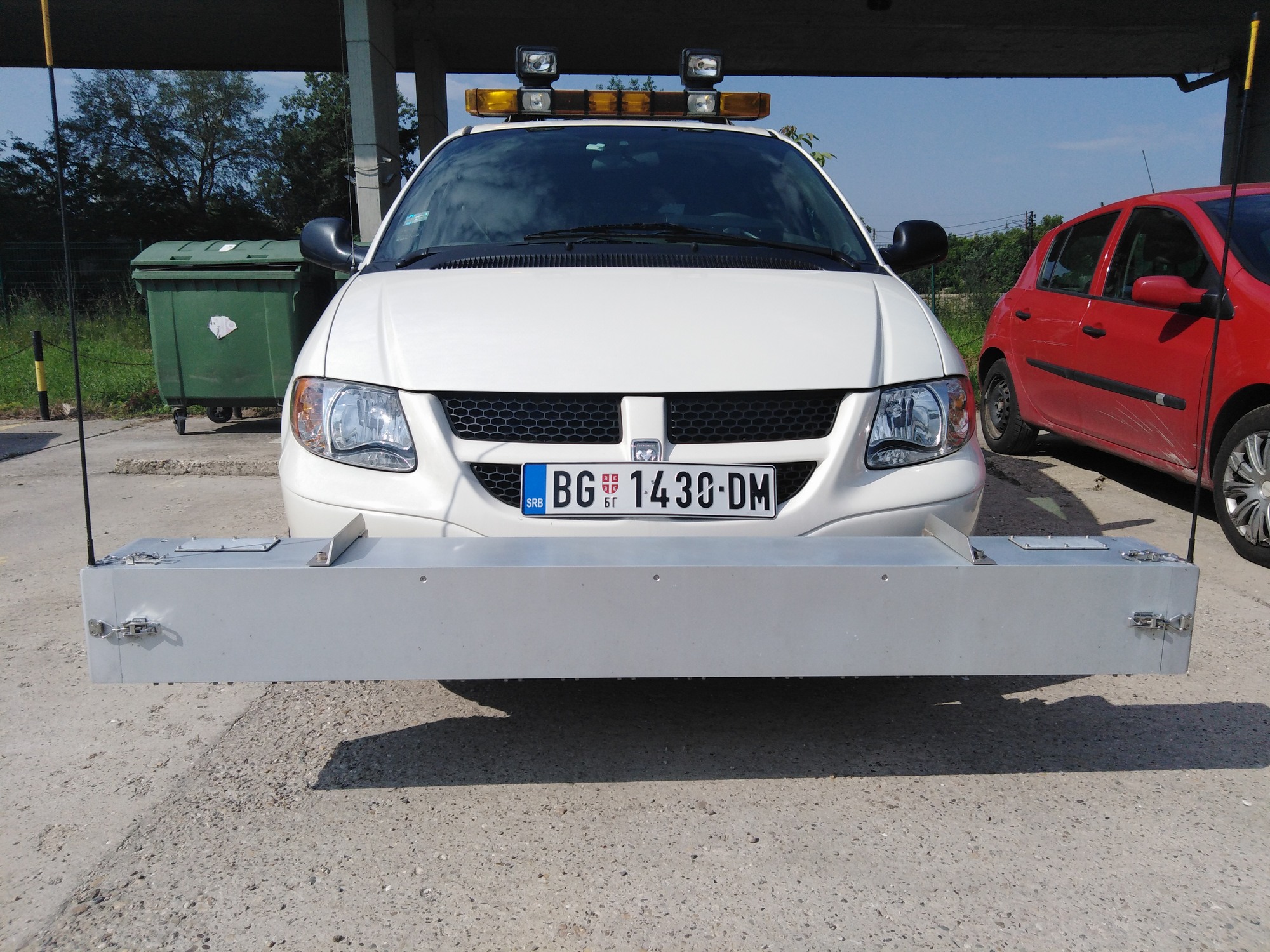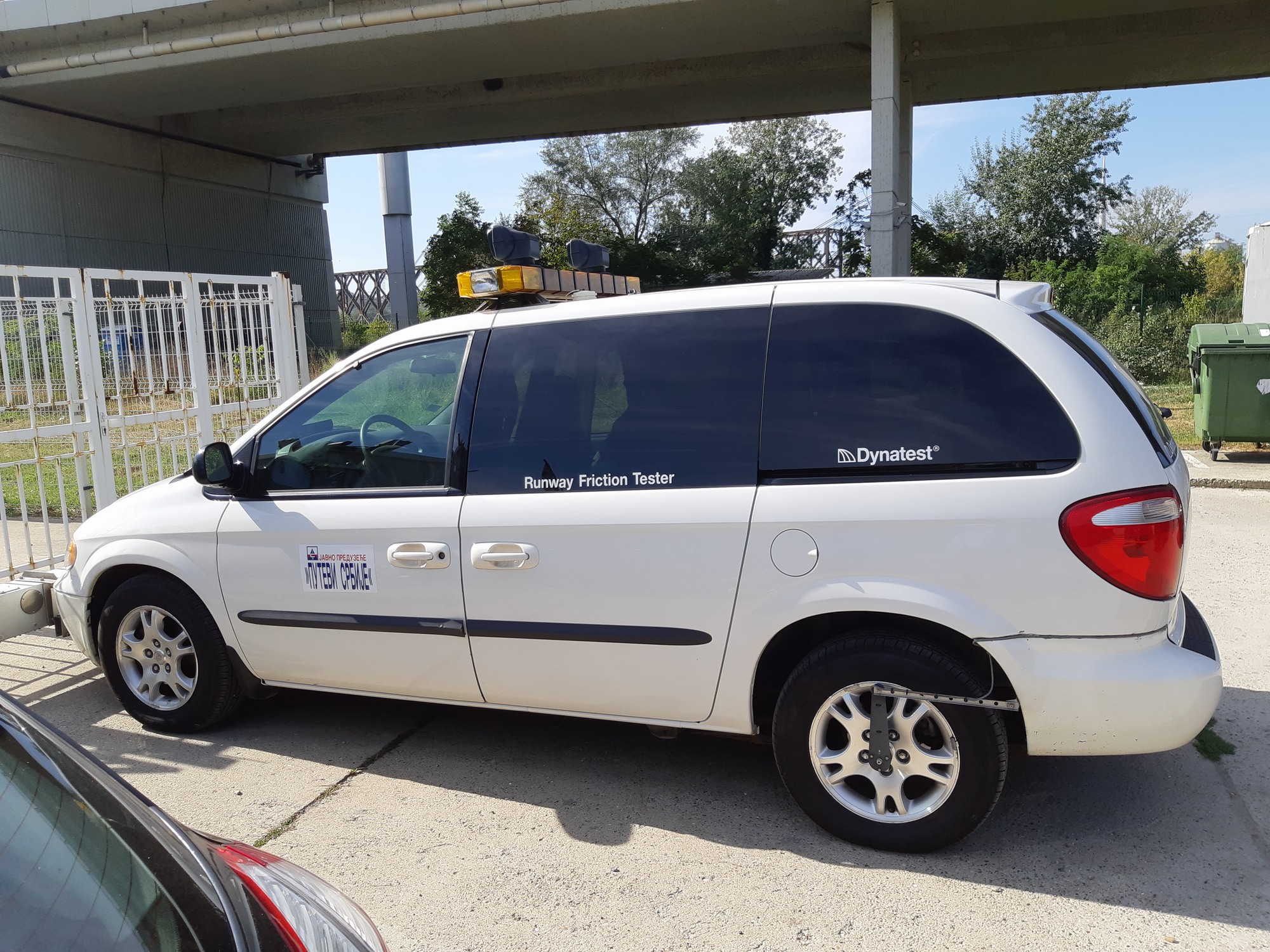
Department for Data Bases performs data base development and management activities in accordance with the latest technologies and modern global practice. Within its regular activities, collection, updating, control, verification and data analyses are performed regarding the: traffic flow, bridges, structures and unstable terrains, railway crossings, traffic signage and equipment, traffic accidents etc. In order to satisfy the users’ need for data and automatization of business processes, WEB application solutions are developed and improved for data overview and generating the reports from the single central geospatial data base. Also, analyses and processing of data are performed using specialized softwares on which basis reports on traffic flow, carriageway condition assessment, spatial and time distribution, road structure conditions etc. on the state road network are developed.
The activities of the Department for Data Bases are based on the Law on Roads provisions and on the road manager’s mandatory records on state roads and traffic and technical data on roads.
The Department’s work includes the following activites:
Data Bases and Applicative Solutions
Specialized data bases on road network, bridges, tunnels, landslides, railway crossings, traffic counting, traffic accidents, traffic signage and equipment, etc. have been developed within the Department, from which the data is stored into the central geospatial base and used through WEB applicative solutions.
Central geospatial base contains various types of spatial data, where each data category is described by a set of specific attributes. For the requirements of forming a geospatial base, georeferencing of real world objects, in the form of points, lines and polygons, was performed. The data was obtained from different sources such as, for example, other specialized data bases, different alpha numeric bases, as a result of projects and studies conducted within the PERS by collecting data from the field, using the GPS and other devices and sensors intended for recording different values and indicators. The dynamics of data updating differs, depending on the type of data. Some of it is updated periodically, for a specific number of days or months, while the other is updated in real time by sending the data directly from the measuring device.
The GIS portal of the PE “Roads of Serbia“ represents a web application which enables a centralized and comprehensive overview of the data from the central geospatial PERS base using the visualisation of contents on the special interactive map, with a possibility of applying various spatial analyses, searches, overlaps of different types of data, development of reports etc. Since the central data base contains the data from specialized (native) bases, one can see the most relevant data on the PERS GIS portal regarding the: reference state road network, traffic counting, axle load, assessment of the road network conditions, road structures, unstable occurrences, railway crossings, ITS equipment elements, toll stations, public road accompanying contents, cycle lanes, road accidents, data from various projects and studies conducted within PERS, territories for road maintainance, energy management, European road network, register of spatial units, MIA organizational units, and the Republic of Serbia orthophoto.

The Road Data Base contains the basic information on the Republic of Serbia state roads, the records and the conditions of the road furniture, collected within the project “Determining the State of National Road Network''. In order to enable access to the users within PERS from any location and to the data on: section properties, inventory, conditions of the carriageway, traffic flow, reference state road system etc., a replica of the original base was created and can be accessed through the WEB GIS application. One can look at the data on the interactive map and in the tables as well, perform search and spatial selections and apply other basic GIS tools, and also export the data in different forms.
The Bridge Data Base contains information defining all the inspected bridge elements, with instructions for inspection and assessment of the conditions, load-bearing capacity and the list of the existing damages, and the application for determining the bridge rating according to the maintenance priorities. The access to the data is enabled using the WEB application intended for the overview and manipulation of the data. The application contains the Notes on Structure Load-Bearing Capacity Control, Inventory Notes on Bridges and Structures, Notes on Structure Inspection. One can also submit a request for special transport using the application.
The Supporting Structure Data Base contains the data on the inventory characters from the As-Built Drawings or inventory surveys and the data on exploitation state characters, occasional systematic check-ups, qualitative analysis and assessment of the state of all relevant elements. The access to the data is enabled using the WEB application intended for the overview and manipulation with the data. The application also contains the Notes on Supporting Structure Inventory and the Notes on Supporting Structure Inspection.
The Tunnel Data Base contains the data on description, condition assessment and regular maintenance.
The Traffic Counting Data Base contains the data on the traffic flow changes through time, i.e., the data on traffic flow characteristics:
- average annual daily traffic (AADT);
- AADT per basic vehicle categories on road sections;
- hourly distribution of traffic flow in 8760 hours during the year;
- hourly flow distribution per direction throughout the year;
- total monthly traffic;
- average monthly day traffic;
- maximum and minimal day traffic;
- total and average night traffic.
The presentation of the data on traffic counting is issued in printed and electronic forms, and it is featured on the enterprise’s website every year.
The Traffic Signage and Equipment Data Base contains the data recorded within the pilot-project on 100 km of state roads. In 2019, on a pilot territory, survey using the LIDAR technology was performed, so the data on spherical photos and the 3D terrain model is available. The Railway Crossing Data Base contains the data on railway crossings on the state roads, obtained by combining, adjusting and checking the data from various relevant sources. The sources are: railway management enterprises, supervising authorities supervising the state roads, data obtained by the LIDAR technology within the pilot projects carried out throughout 2019 and 2020 on 43 railway crossings, field inspections of certain crossings throughout 2019 – 2022, the state road network survey project RRSP-RNCS 2017 – 2020, inventory lists from 2021. The data is regularly maintained in periodic intervals. The work with the data from both bases is available through the special WEB applicative software, serving for visualisation, spatial analyses, development of interactive reports, review of spherical photos and 3D terrain models, etc.
The Data Base on Traffic Accidents on State Roads was created for the requirements of monitoring the road safety condition, and for monitoring the effects of the measures applied in the process of road safety improvement on the state road network. Qualitative and logical control is performed for the purpose of improving the data quality. Users can look at an overview of key indicators on the Control Tables using the WEB application.
The longitudinal and transverse roughness survey. The Department for Data Bases performs surveys of longitudinal and transverse carriageway roughness using the DYNATEST equipment for surveying the road network on the roadways. The data overview has been allowed within the PERS GIS portal.
Participation in important projects
Representatives of the Department for Data Bases take part in many work groups and teams during the implementation of various projects, the most important of which are:
- Collaboration with the Republic Geodetic Authority with the aim of forming a National Infrastructure of Geospatial Data and Data Meta-Catalogues
- Participation in the process of adjusting and harmonizing the INSPIRE directive with the laws and bylaws in the Republic of Serbia
- Collaboration with the Transport Community Secretariat to provide the necessary data for the implementation of the TODIS project (Transport Observatory Database / Information System)
- Collaboration with the Road Traffic Agency and the Traffic Police Directorate, the Ministry of Internal Affairs, regarding the development and updating of the Single Data Base on Basic Traffic Safety Characteristics
- Collaboration with the European Community on the projects for traffic safety improvement on railway crossings
- Project “Development of National Strategy for Transport Development in Republic of Serbia until Year 2030”
- Educational campaigns for raising awareness on traffic safety:
- ''3 Seconds, a Whole Life''
- 'Do Not Drive in Emergency Lane''
- ''A Sign Means Life''
- Development of a Rulebook on method of railway and road, pedestrian or cycling lane intersecting, the location where the intersecting can be performed and the measures for ensuring safe traffic,
- Collaboration with the Ministry of Construction, Transport and Infrastructure, Serbian Railways Infrastructure and the Directorate for Railways regarding the applicative software for the work with data from geospatial data base on traffic signage and railway crossings
- Analysis, control and preparation of data for reporting on traffic accidents on state roads
- Making suggestions for the Law on Roads amendments
Harmonization of the TEN-T network with the new version of the state road reference system.










